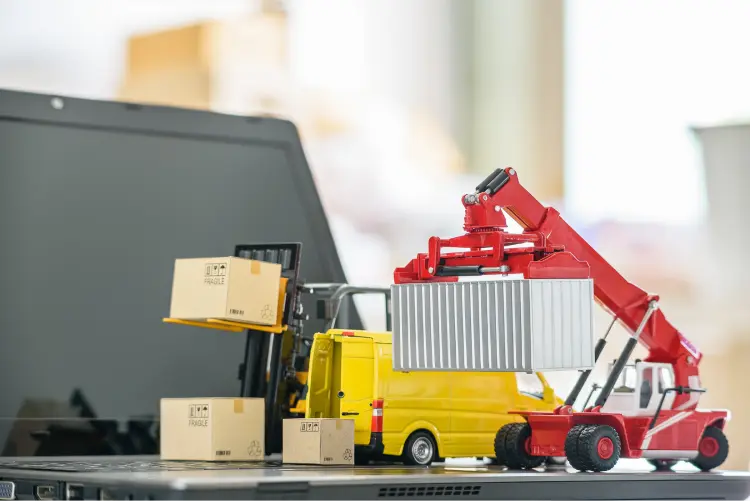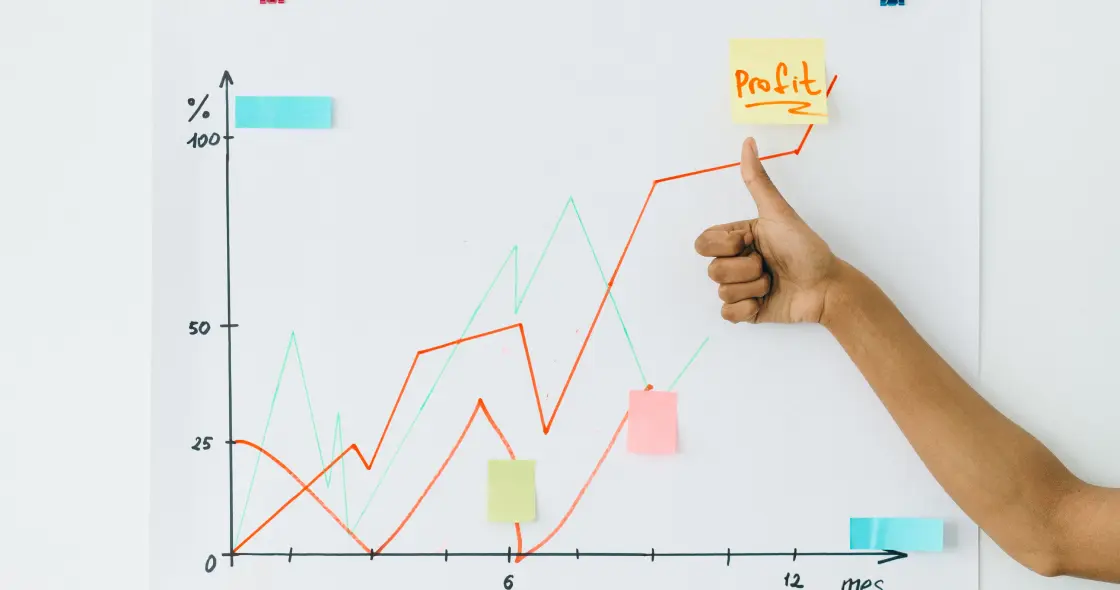This is part 1 of a 3-part series by Chelsea Cohen (SoStocked, Carbon6). Watch the webinar, Three Silent Amazon Profit Killers.
Believe it or not, more than a few sellers are unknowingly operating at a loss because they’re leaking profits without realizing it.
For instance, Amazon typically announces fee changes to its FBA services every year and recently has been introducing surcharges to cover inflationary pressures. The per-unit fee increase may seem small, but when added up and applied across your entire catalog, the total costs can be quite significant.
A report from Marketplace Pulse shows that Amazon fulfillment fees have gone up by more than 30% over the last two years – a massive profit killer!
However, many sellers are responding to this mounting Amazon fee stack, AKA Amazon’s extensive fee increases, with little more than frustration or apathy. Because they don’t have any proactive measures in place to stop the bleeding, their businesses become less and less profitable with each price hike.
When a company is bleeding money, it moves into quite a precarious position in which vitals like cash flow and available capital are unstable at best. Therefore, applying cost management strategies and inventory management methods is crucial.
In this three-part blog feature, I’ll first introduce you to the top three Amazon profit killers. Then, I’ll share my step-by-step strategy to help you to keep ahead of those fee increases and ultimately, improve your margins.
3 Silent Profit Killers for Amazon Sellers

Part of managing a business is identifying areas where you might be losing profit. But that’s not easy to do, especially if you’re just starting out. So, profit killers tend to fly under the radar and only show up once their impact on your margins has become too obvious to be ignored.
For Amazon sellers, below are the 3 biggest silent profit killers.
1. Fulfillment Fees
Amazon fees have risen by over 30% in just two years. Typically, it would take several years for prices to reach that level as there would have been a gradual roll out. Unfortunately, we’re currently living in a time when inflation is reaching new heights at a rapid pace, thanks to the supply shortages caused by the pandemic and other variables.
In 2022, we’ve seen Amazon blasting sellers with a lot of fees, including a new aging inventory fee and surcharges on fuel and inflation and most recently, a fee for peak holiday fulfillment.
DIM Pricing: Fulfillment Fees in Effect
In January 2022, Amazon introduced dimensional weight (DIM weight) pricing to several product size categories, removal/disposal fees, and remote fulfillment fees. DIM weight is the amount of space a product, carton, or pallet occupies in relation to its actual weight.
When a shipment is subject to DIM weight pricing, carriers calculate your shipping rates based on whichever is greater of actual weight and dimensional weight. Whichever is higher becomes the chargeable weight.
Within the SoStocked community, several sellers saw a $1 per unit fee increase due to DIM weight pricing. One seller even reported a 94% increase in fulfillment fees due to dimensional weight. The increase can be quite huge to lightweight, low-cost items with large dimensional sizes, because it can quickly push them into oversize categories and make shipping and storage fees more expensive.
Fight Fees with Better Inventory Management Methods
As we have seen, there are increasingly more fulfillment fees you’ll have to bear just to sell your product on Amazon. And they keep increasing, making inventory and cash flow management even more complicated. While there’s no getting around the fees, there are ways to help to reduce them.
The first step is to understand these factors that are dragging your margins down. Once you understand them, you can start looking at them differently. In fact, you’ll start to look at your business differently all together.
Dissecting the nuances of your profit (or lack thereof) opens up a whole new world of possibilities as far as how to improve it. We’ll share all that in our follow up post that introduces my step-by-step method to profit recovery. For now, let’s tackle these other profit killers so we can begin to arm ourselves against them.
2. Overstocking or Holding Costs
Overstocking leads to holding costs – expenses associated with keeping inventory in a warehouse or fulfillment center.
Additionally, if you’re carrying excess inventory and you have to remove it from FBA to avoid costly storage fees, you’re then paying removal fees that have gotten 44% to 61% more expensive over the last few years.
Simply put, overstocking can be very expensive and it’s something that sellers don’t always pay attention to. It’s a common trap for sellers to focus on their bestsellers while letting slow sellers unwittingly eat into their profits. Every month that a product does not sell, it becomes less and less profitable due to incurring monthly storage fees.
Excess inventory should be closely monitored and a plan should be devised to minimize it in order to keep those holding costs down. Luckily, this is one of the strategies I cover in my step-by-step method to reduce the negative impact of overstock on profit margins.
3. Shipping & Handling Costs
Shipping and handling are aspects of inventory management that many sellers feel they do not have much control over. We don’t set global shipping rates, international tariffs, or governmental import/export fees – these elements aren’t exactly negotiable.
Not to mention that our warehouse has its own set of hard costs, such as labor, pallets, packing materials, overhead, and so on, that make getting discounted rates difficult to pull off.
A huge piece of our profit is consumed by this category within our Profit & Loss (P&L) statement each month and paying those freight forwarder (FF) and third party logistics warehousing (3PL) invoices does not get any easier to stomach.
If we can’t change worldwide freight practices and can’t negotiate our rates down, at the very least we can reduce the amount of shipping and handling needed to run our business.
There are ways to claw back some of the profit you’re currently losing to your FFs and 3PLs. It requires thinking inside the box, literally. In part 2, I’ll teach you a step-by-step strategy for pallets and containers that helped a good friend of mine recover $75,000 in annual profit on a single product.
Stockouts: Serial Profit Killers
When talking about profit, we can’t forget to bring stockouts into the conversation. This is not a silent killer, but one that screams bloody murder! When you stock out, my goodness, do you feel it, and so do your cash flow and bottom line.
Many stockouts are caused by bad inventory management practices, such as purchasing inventory too late or generating inaccurate forecasts, causing you to under-order.
Unfortunately, stockouts can cost you a ton in sales-related and internal process-related losses:
- A sales-related stockout cost is when a potential customer wants to place an order, but the product is unavailable. The buyer may go to a competitor with available stock, and as a result, you lose the gross profit related to the sale. If you have a consumable product or a catalog of products that you can cross-sell, that lost customer could be quite a bit more costly than just the missed revenue from that one lost product sale.
- An internal process-related stockout is when you need inventory but there are no raw materials available. You would then be forced to look for new suppliers and absorb the costs related to rushed production and shipping (by air) timelines in order to receive your inventory immediately.
We’re all aware that stockouts are a huge problem, but don’t stress. Beyond strategies on avoiding the silent profit killers, I do have some tips on how you can reduce or avoid stockouts to further increase your profitability. In part 2 of our 3-part series, I will lay out the 3-step method that will show you you can overcome these profit killers.
My step-by-step method will teach you how to (1) Check Your Pulse to ensure your profit vitals are in good shape, (2) Stop the Bleeding so you can stop hemorrhaging money, and (3) Fight Back to take control of your margins and make proactive efforts towards a more profitable business.
Helping sellers to keep more of the money they make is a true passion of mine – I call it profit optimization across the supply chain. I can’t wait to show you how it works.








